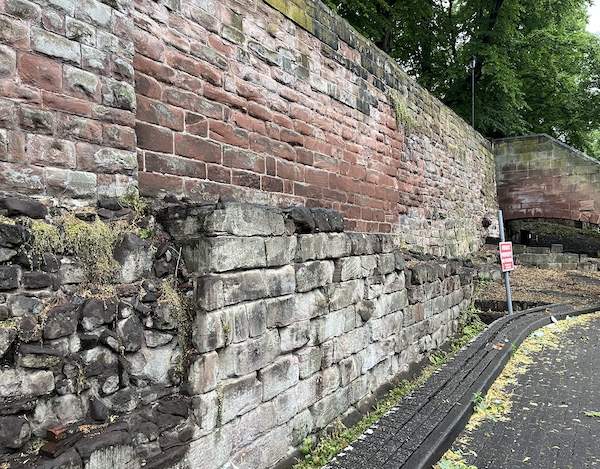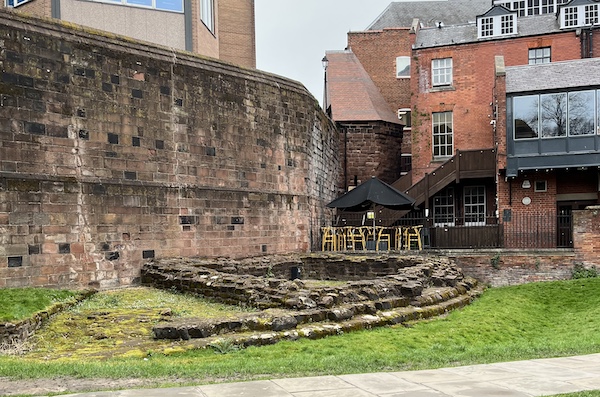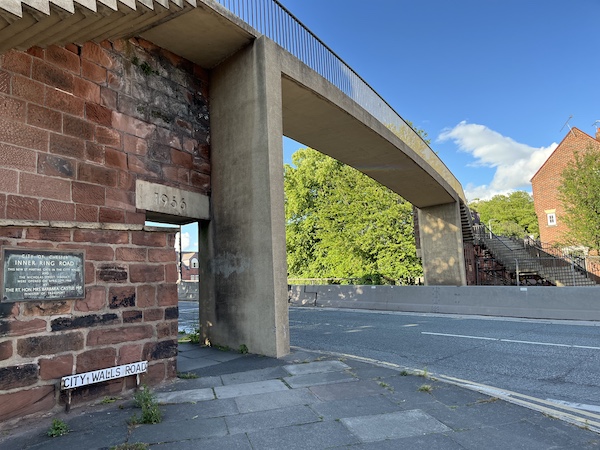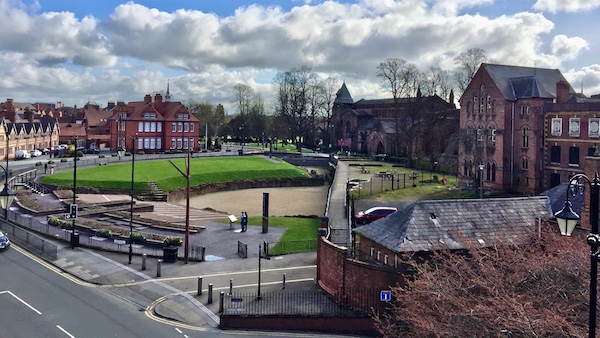Roman Sites of Chester
There are many Roman remains that are still visible in and around Chester. Some are in cellars of private premises and permission might sometimes be needed to view them. However, there are also several sites in public areas with open access. These unrestricted sites offer a good insight into the make up of a Roman fortress. This page will highlight some of the Roman sites in Chester that have unrestricted access.
The Romans used a ‘playing card’ layout for their permanent fort at Chester. It was rectangle in shape with rounded corners. Towers were built at each corner and additional towers would have been built at intervals between the corners. Chester's four main streets of today still follow the line of the Roman roads which had the Roman street names as follows:-
Via Principalis - Watergate and Eastgate Street
Via Decumana - Northgate Street
Via Praetoria - Bridge Street.
Roman North Wall:

Two large sections of the late Roman walls have been preserved between Northgate and King Charles Tower and can be best seen from the bridge over the canal just outside Northgate. The top is marked by a cornice jutting out about one metre below the modern parapet.
Roman East Wall:


Two sections of the base of the fortress wall can be seen near the cathedral, just outside the present city walls. One section is by the steps to Frodsham Street, near the Bell Tower and the other a little further north. In both cases the difference between the even courses of the Roman wall and the irregular line of the Medieval wall is clear.
Roman South East Angle Tower:

The foundations of the tower are visible either at ground level or from the wall by the Newgate. Fortressess had towers at the gates and generally at intervals along the walls and they also had towers at each angle. They were bult inside the walls and projected above them. The depression in the grass outside represents the inner lip of the defensive ditch which was also part of the original fortification.
Roman North West Angle Tower:


The North West Angle Tower was found when the north wall was breached during the construction of the inner ring road in 1965. The remains of the tower are not visible but its position has been marked with cobbles on the pavement and road surface just below the modern footbridge.
Roman Strong Room:


This is where the soldiers' pay and valuables were kept. It was underneath the shrine at the back of the Principia, or headquarters building, which fronted the Via Principalis. It was found during excavations before the building of the Forum Precinct (which has since closed down), and a viewing window was constructed which is still accessible through Hamilton Place, off Northgate Street by the Dublin Packet public house.
Roman Amphitheatre:

Just under half of the amphitheatre, the largest known in Britain, has been excavated. The rest lies buried under Dee House and the adjacent land. Much of the lower parts of the arena wall and doorways of the north and east entrance survive. The positions of the outer wall, which must have stood about 12 metres high and the butresses, which supported the seating accommodation, have been marked out. A small shrine and altar to the Goddess of Fate, Nemesis, was found just inside the north entrance.
Roman Gardens:

A number of pillar bases have been set up in gardens outside the wall, just south of the Newgate. These pillar bases have been collected over the years from various sites in the city and are not in their original positions. There is also a reconstruction of a hypocaust, a Roman underfloor heating system.
Minerva Shrine and Quarries:

The badly weathered remains of a shrine to the Goddess of Wisdom, Minerva, and the grassed over faces of the quarries which provided stone for the fortress, can be seen in Edgar's Field, a public garden on the south side of the river just over the Old Dee Bridge.
* * *
Further details of Roman Chester, including information about Roman tombstones can be viewed on the Roman Chester page.